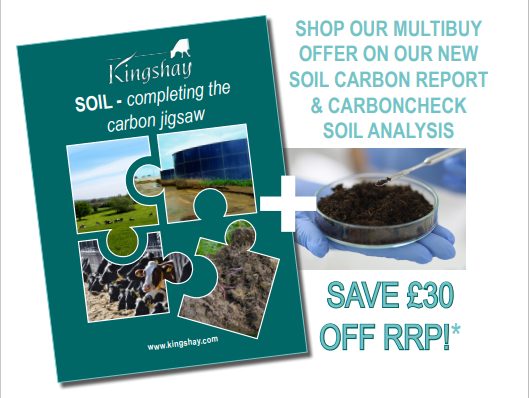Soil - completing the carbon jigsaw
Independent Dairy Specialists, Kingshay, have released a report on Soil Organic Carbon (SOC), which shows how the levels of carbon stored in grassland soils can be measured, increased and monitored.
“There is huge opportunity for the build-up of organic carbon in soil to contribute towards the achievement of net zero emissions from the British agricultural sector,” says Kingshay’s Sarah Bolt, author of the report. “This is because every tonne of carbon stored is equal to 3.67 tonnes of CO2 equivalent which is not being emitted into the atmosphere.
“However, for carbon storage to fit practically into farm business models, it's essential for the carbon currently present, and the maximum potential for SOC storage, to be readily quantifiable.”
Sarah explains that this can be achieved through soil sampling, to calculate the total tonnage of carbon stored per hectare of soil, plus working out the carbon storage capacity of a soil given its texture.
“This is exactly how the data for the report was gathered from 100 dairy farms in England, Scotland and Wales,” she says.
The participating farms also shared farm and field profile information, which enabled links to be made between management practices used and the extent to which the soil was meeting its potential for carbon storage.
“If SOC is to be used as a parameter for measuring environmental benefits to inform subsidy schemes, such as ELMs, it’s imperative that farmers have solid evidence for what works to increase organic carbon in soils,” says Sarah.
She highlights that the report findings show grassland soils can be managed to increase carbon storage.
“In terms of reducing losses of carbon from soils, it was clear that fields which had been reseeded using oversowing or direct drilling, had higher levels of SOC than those which had been cultivated or ploughed."
“Another key finding was that SOC carbon tended to be highest under permanent pasture, and in grass leys, the longer the ley duration, the higher the level of SOC,” she adds.
“By measuring SOC now, and repeating the exercise in three to five years, farmers will be able to benchmark progress and understand the impact of any management practices implemented on SOC.”

For further information on this report or membership, call Kingshay on 01458 851 555.
- 1st April 2021
